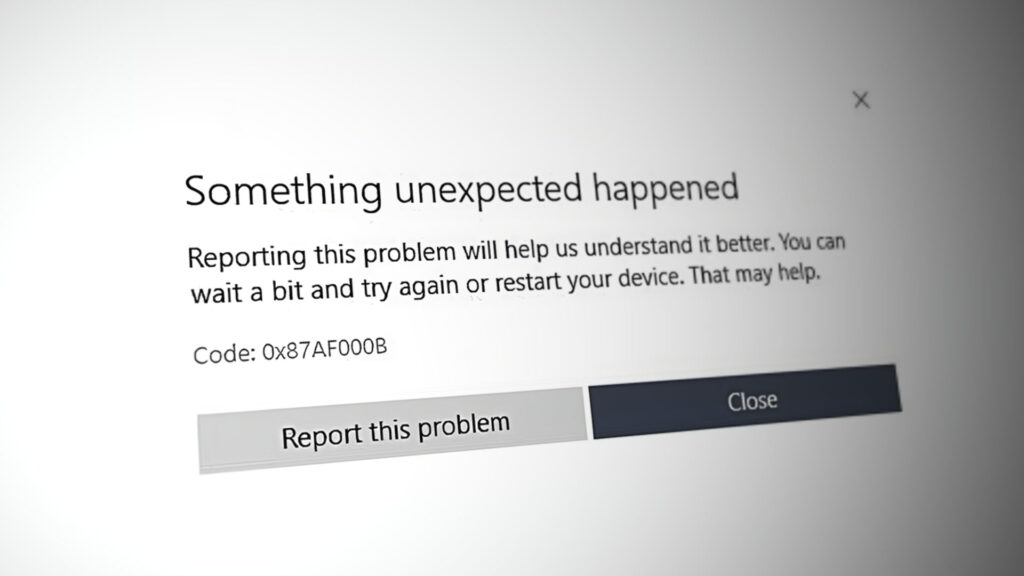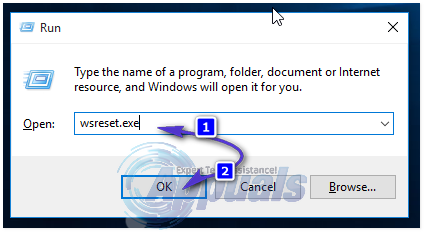Fix: Microsoft Store Error Code 0x87af000b Something went wrong
Among the plethora of problems known to affect the Windows Store on Windows 10 is a rather undocumented and obscure issue that causes users affected by it to see an error message containing error code 0x87af000b whenever they try to install an app from the Windows Store. So far, any specific causes for this issue other than some kind of a hitch with Windows Store have not been identified. Simple measures such as ensuring the date and time settings on the affected computer are correct and running SFC scans or a DISM commands have proven to be entirely ineffective, which is what makes this issue all the more significant.
Thankfully for users affected by this problem, though, this issue is completely fixable. The following are some of the most effective solutions that you can use to try and resolve this problem and restore your computer’s ability to successfully download and install applications from the Windows Store:

Solution 1: Reset the Windows Store cache
Many Windows Store-related issues that inhibit affected users from successfully downloading and installing apps from the Store can fixed by simply resetting the Windows Store cache, and this might just hold true in your case. To reset your computer’s Windows Store cache, you need to:
- Press the Windows Logo key + R to open a Run
- Type wsreset.exe into the Run dialog and press Enter.
- Wait for the command to be executed and the Windows Store cache to be reset.
- Restart your computer, and when it boots up, check to see whether or not the problem has been resolved.

Solution 2: Re-register the Windows Store
- Open the Start Menu.
- Search for “powershell”.
- Right-click on the search result titled Windows PowerShell and click on Run as administrator.
- Type the following into the elevated instance of Windows PowerShell and press Enter:
powershell -ExecutionPolicy Unrestricted Add-AppxPackage -DisableDevelopmentMode -Register $Env:SystemRoot\WinStore\AppxManifest.XML
- Once the command has been executed, close Windows PowerShell and restart your computer.
When the computer boots up, launch the Windows Store and try installing an application to see whether or not the issue persists.

Solution 3: Switch to a new user account
One thing we know for sure about this issue is that when it affects a user, it stays confined to their user account and can’t follow them to a new user account. Since that is the case, you can get rid of this issue by migrating to a new user account on your computer. First and foremost, you are going to have to create a new user account:
- Click on Start Menu > Settings.
- Click on Accounts.
- Click on Your account.
- Click on Family & other users in the left pane.
- Under Other users in the right pane, click on Add someone else to this PC.
- Click on Sign in without a Microsoft account and select Local account on the next page.
- Set the new account’s username and password, and make sure that the new account has administrative privileges and is an administrator. When done, click on Next and then click on Finish.
- Logout, login to your new account, launch the Windows Store and try to install an app to make sure that the Windows Store works on your new user account.
Once you have made sure that this issue doesn’t exist on your new account and the Windows Store works as it should, move all of your data and files from your old user account to your new one, and then delete the old user account.
Solution 4: Reset your computer
If none of the solutions listed and described above have worked for you, fear not as you still have one last resort – completely resetting your computer to factory settings. Windows 10 comes with a feature that allows users to completely reset its software and Operating System to the way they were when the computer was booted up for the very first time. To reset a Windows 10 computer, simply follow this guide. It should be noted that resetting a Windows 10 computer uninstalls all applications and programs that didn’t come pre-installed on the computer, resets all settings and preferences to their default values and, if the user chooses so, deletes all user data and files stored on the computer.